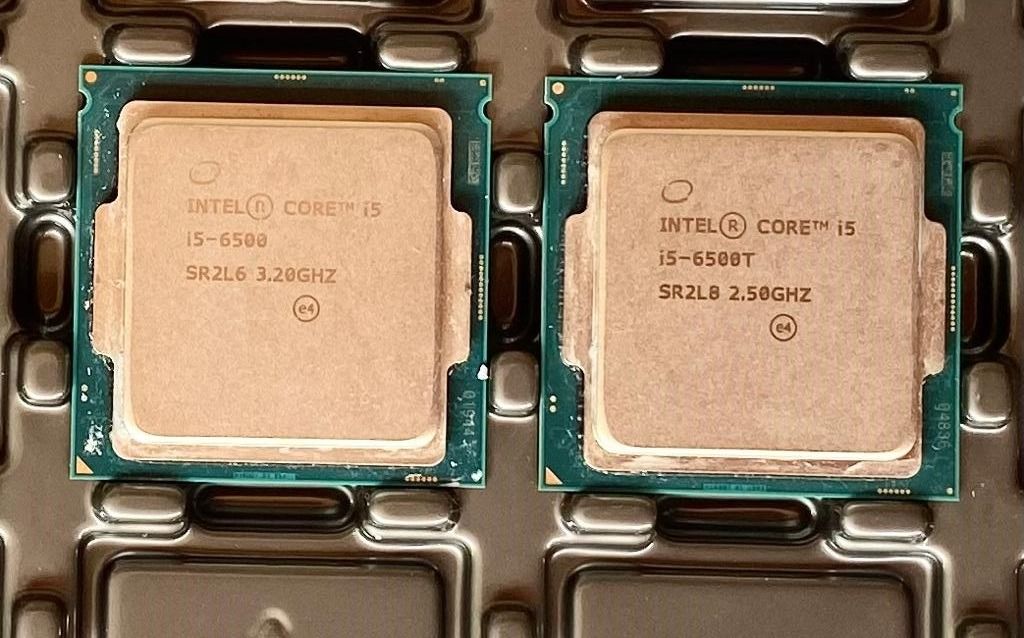In the ever-evolving world of computer technology, processors are key components that drive performance and efficiency. The Intel Core i5-6500, introduced in early 2016, has been a popular choice for many users due to its balance of power and cost. As we navigate through 2024, it’s worth examining whether this processor remains a viable option for modern computing needs.
Overview of the Intel Core i5-6500
The Intel Core i5-6500 is a quad-core processor from Intel’s 6th generation of CPUs, also known as Skylake. It features a base clock speed of 3.2 GHz and can boost up to 3.6 GHz. Built on a 14nm process, it supports DDR4 memory and has a thermal design power (TDP) of 65 watts. Its performance has been sufficient for everyday computing tasks, including office applications, web browsing, and light gaming.
Performance in 2024
In 2024, the Intel Core i5-6500's performance shows its age when compared to newer processors. Modern applications and games have become more demanding, and the i5-6500 struggles to keep up with high-end multitasking and intensive tasks. Newer CPUs, like Intel’s 12th and 13th generation processors, offer significant improvements in core count, clock speed, and architecture efficiency. However, for users with basic computing needs, the i5-6500 still performs adequately for general use.
Benefits of Using the i5-6500 Today
Cost-Effectiveness: With the advent of new processors, older models like the i5-6500 can be found at lower prices, making them an attractive option for budget-conscious users or for upgrading older systems without a complete overhaul.
Adequate for Basic Tasks: For users who primarily use their computers for tasks such as word processing, email, and casual web browsing, the i5-6500 provides sufficient performance. It’s also capable of handling light gaming and media consumption.
Compatibility: The i5-6500 is compatible with a range of motherboards, particularly those with the LGA 1151 socket, which can be beneficial for users looking to upgrade their existing systems without needing new components.
Considerations for Upgrading
Future-Proofing: If you’re considering future-proofing your setup, investing in a newer processor would be wise. Modern processors offer better performance, energy efficiency, and support for newer technologies, such as PCIe 4.0 and DDR5 memory.
Performance Bottlenecks: The i5-6500 may become a bottleneck in systems where users require higher levels of performance, such as for gaming at high settings or professional content creation. Newer CPUs can handle these tasks more effectively, providing a smoother and more responsive experience.
Software Requirements: Some newer software applications and operating systems are optimized for more recent hardware, potentially leaving older processors like the i5-6500 behind in terms of performance and compatibility.
Alternatives to Consider
For those looking to upgrade from the i5-6500, several modern processors offer significant improvements:
- Intel Core i5-12400: A 12th generation CPU offering higher performance and efficiency with support for newer technologies.
- AMD Ryzen 5 5600X: Known for its strong multi-core performance and competitive pricing, making it a solid alternative for both gaming and productivity tasks.
Conclusion
In 2024, the Intel Core i5-6500 remains a viable option for users with basic computing needs due to its cost-effectiveness and adequate performance for everyday tasks. However, for those seeking to future-proof their systems or requiring higher performance for demanding applications, considering a more recent processor is advisable. While the i5-6500 still has its place, evaluating your specific needs and budget will help determine if it’s time for an upgrade or if this processor can continue to serve you well.

